SPARC deficiency results in improved surgical survival in a novel mouse model of glaucoma filtration surgery
- PMID: 20195533
- PMCID: PMC2828474
- DOI: 10.1371/journal.pone.0009415
SPARC deficiency results in improved surgical survival in a novel mouse model of glaucoma filtration surgery
Abstract
Glaucoma is a disease frequently associated with elevated intraocular pressure that can be alleviated by filtration surgery. However, the post-operative subconjunctival scarring response which blocks filtration efficiency is a major hurdle to the achievement of long-term surgical success. Current application of anti-proliferatives to modulate the scarring response is not ideal as these often give rise to sight-threatening complications. SPARC (secreted protein, acidic and rich in cysteine) is a matricellular protein involved in extracellular matrix (ECM) production and organization. In this study, we investigated post-operative surgical wound survival in an experimental glaucoma filtration model in SPARC-null mice. Loss of SPARC resulted in a marked (87.5%) surgical wound survival rate compared to 0% in wild-type (WT) counterparts. The larger SPARC-null wounds implied that aqueous filtration through the subconjunctival space was more efficient in comparison to WT wounds. The pronounced increase in both surgical survival and filtration efficiency was associated with a less collagenous ECM, smaller collagen fibril diameter, and a loosely-organized subconjunctival matrix in the SPARC-null wounds. In contrast, WT wounds exhibited a densely packed collagenous ECM with no evidence of filtration capacity. Immunolocalization assays confirmed the accumulation of ECM proteins in the WT but not in the SPARC-null wounds. The observations in vivo were corroborated by complementary data performed on WT and SPARC-null conjunctival fibroblasts in vitro. These findings indicate that depletion of SPARC bestows an inherent change in post-operative ECM remodeling to favor wound maintenance. The evidence presented in this report is strongly supportive for the targeting of SPARC to increase the success of glaucoma filtration surgery.
Conflict of interest statement
Figures
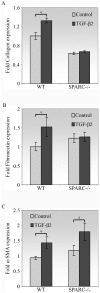
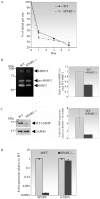
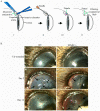
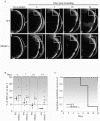

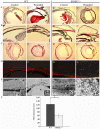

Similar articles
-
Enhanced angiogenesis characteristic of SPARC-null mice disappears with age.J Cell Physiol. 2005 Sep;204(3):800-7. doi: 10.1002/jcp.20348. J Cell Physiol. 2005. PMID: 15795937
-
An in vitro model of posterior capsular opacity: SPARC and TGF-beta2 minimize epithelial-to-mesenchymal transition in lens epithelium.Invest Ophthalmol Vis Sci. 2007 Oct;48(10):4679-87. doi: 10.1167/iovs.07-0091. Invest Ophthalmol Vis Sci. 2007. PMID: 17898292
-
Targeted therapy for the post-operative conjunctiva: SPARC silencing reduces collagen deposition.Br J Ophthalmol. 2018 Oct;102(10):1460-1470. doi: 10.1136/bjophthalmol-2018-311937. Epub 2018 Jul 18. Br J Ophthalmol. 2018. PMID: 30021812 Free PMC article.
-
The critical role of the conjunctiva in glaucoma filtration surgery.Prog Retin Eye Res. 2009 Sep;28(5):303-28. doi: 10.1016/j.preteyeres.2009.06.004. Epub 2009 Jun 30. Prog Retin Eye Res. 2009. PMID: 19573620 Review.
-
Ab interno approach to the subconjunctival space using a collagen glaucoma stent.J Cataract Refract Surg. 2014 Aug;40(8):1301-6. doi: 10.1016/j.jcrs.2014.01.032. Epub 2014 Jun 15. J Cataract Refract Surg. 2014. PMID: 24943904 Review.
Cited by
-
Matrix Metalloproteinases and Glaucoma.Biomolecules. 2022 Sep 25;12(10):1368. doi: 10.3390/biom12101368. Biomolecules. 2022. PMID: 36291577 Free PMC article. Review.
-
Pathobiology of wound healing after glaucoma filtration surgery.BMC Ophthalmol. 2015 Dec 17;15 Suppl 1(Suppl 1):157. doi: 10.1186/s12886-015-0134-8. BMC Ophthalmol. 2015. PMID: 26818010 Free PMC article. Review.
-
Valproic acid modulates collagen architecture in the postoperative conjunctival scar.J Mol Med (Berl). 2022 Jun;100(6):947-961. doi: 10.1007/s00109-021-02171-2. Epub 2022 May 18. J Mol Med (Berl). 2022. PMID: 35583819
-
Assessment of progressive alterations in collagen organization in the postoperative conjunctiva by multiphoton microscopy.Biomed Opt Express. 2020 Oct 19;11(11):6495-6515. doi: 10.1364/BOE.403555. eCollection 2020 Nov 1. Biomed Opt Express. 2020. PMID: 33282504 Free PMC article.
-
Custom RT-qPCR-array for glaucoma filtering surgery prognosis.PLoS One. 2017 Mar 30;12(3):e0174559. doi: 10.1371/journal.pone.0174559. eCollection 2017. PLoS One. 2017. PMID: 28358901 Free PMC article.
References
-
- The AGIS Investigators. The advanced glaucoma intervention study (AGIS): 7. The relationship between control of intraocular pressure and visual field deterioration. Am J Ophthalmol. 2000;130:429–440. - PubMed
-
- Reddick R, Merritt JC, Ross G, Avery A, Peiffer RL. Myofibroblasts in filtration operations. Ann Ophthalmol. 1985;17:200–203. - PubMed
-
- The Fluorouracil Filtering Surgery Study Group. Fluorouracil filtering surgery study one-year follow-up. Am J Ophthalmol. 1989;108:625–635. - PubMed
Publication types
MeSH terms
Substances
LinkOut - more resources
Full Text Sources
Other Literature Sources
Medical
Molecular Biology Databases
Miscellaneous

